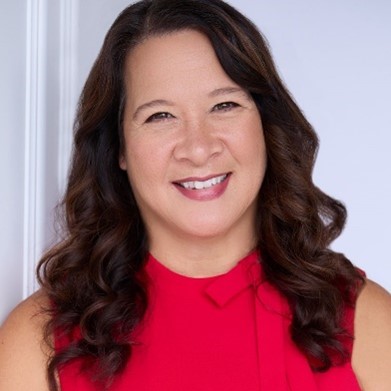As you know, it is always my honor to share a weekly letter with our membership. It is even more fun when we have guest columnists. This week, AME Champions Club member and columnist David A. Behling shares an interview with volunteer extraordinaire Tracy ORourke. If Tracy’s name sounds familiar, you may recall that she was the first recipient of the AME conference song contest last year.
 Tracy ORourke is an excellent example of volunteerism, and we are grateful she chooses to share her talents with AME. She loves helping clients solve their culture puzzle and is a self-proclaimed process improvement ZEALOT! Tracy has been an independent consultant for 25 years and has advised several companies on many aspects of operational excellence, including cultural change, leadership development, strategic planning and deployment, lean process improvement, and building an army of problem solvers and coaches.
Tracy ORourke is an excellent example of volunteerism, and we are grateful she chooses to share her talents with AME. She loves helping clients solve their culture puzzle and is a self-proclaimed process improvement ZEALOT! Tracy has been an independent consultant for 25 years and has advised several companies on many aspects of operational excellence, including cultural change, leadership development, strategic planning and deployment, lean process improvement, and building an army of problem solvers and coaches.
Tracy is a Lean Six Sigma Master Black Belt, co-author of "The Problem-Solver's Toolkit," co-host of the Just-in-Time Cafe podcast, a Lean Six Sigma Instructor at UC San Diego and an active AME Western Region board member.

David A. Behling, LSSMBB, CMQ/OE, MBA, leads the improvement journey at Merritt Aluminum Products. Behling is a results-orientated change agent who creates value and space for growth in diverse organizations (manufacturing, service, government and non-profit) by building cultures of trust, respect, daily problem-solving and waste identification through servant leadership.
Talking Excellence with… Tracy ORourke
Interview by David A. Behling
Behling: What was your first exposure to Excellence that you can remember?
ORourke: If we’re talking about Leadership Excellence, I’ll share a story about a boss that made a difference in my life. Some years into my career, I had a boss named Gary Chaves. I had been working for over a decade already, and Gary was the first leader in my career that I felt took an interest about my future. I never felt like my previous managers cared about my career or cared about what was going to happen to me, what I wanted, or my growth. They treated me like a cog in a wheel. That was a pretty disappointing experience.
Gary was awesome. He was the first manager to have a "true" leadership relationship with me. Gary crafted a culture of caring. He truly cared about his people and went out of his way to be supportive and help his people grow. I also had strong connections with my co-workers. We all felt supported. To this day, I still reach out to Gary.
Now that I think about it, maybe his leadership was not “excellent.” It’s just that my experience prior to him was so bad that it seemed excellent at the time! The truth is, anyone in a leadership role should be like Gary. His leadership behavior should be the expectation, not the exception.
Behling: How would you define Excellence?
ORourke: In the previous question, I was speaking about Leadership Excellence. My belief is that Excellence is when you can achieve something extraordinary with others. The outcome is an excellent product or service, but the experience, the participation and the engagement is also top-notch.
Behling: How do you develop Excellence?
ORourke: So many factors come into play to develop Excellence. Sometimes, excellence isn’t the goal you are striving for, and you stumble upon it. You may absolutely love to do something, like playing Pickleball, playing a musical instrument or spending all your time on a snowboard, and you become excellent through hours and hours of practice. There are hundreds of books on the success criteria to consider, but if we’re talking about building leadership excellence, there is one very important characteristic that excellent leaders have. It is to be always learning and growing. Excellent leaders are constantly reflecting, learning, experimenting and growing. They also have humility and show vulnerability, which are strong drivers to want to learn.
Behling: How would you explain Excellence to an executive?
ORourke: The easy part is explaining the qualities of excellent leaders. The hard part is executing on those characteristics and qualities.
Every leader has their path to take to grow and become better. Being an excellent leader is not cookie-cutter, because it depends on where the leader is today, who they are and where they want to be. It's really helping leaders figure out how to become their best selves as leaders.
For leadership, I like to use the analogy of cultivating a bountiful garden. Leaders start by tilling the land. Just as a farmer tends to the soil, plants the seeds, and nurtures crops, leaders cultivate a positive and thriving culture within their organizations.
Imagine for a moment a vast field, rich with potential, waiting to be transformed into a flourishing and bountiful garden. In this analogy, the field represents the team or the department for which the leader is responsible.
Just as a farmer tills the land, a leader must prepare the soil by creating an environment that is receptive to growth and development. This involves fostering open communication channels, encouraging collaboration and promoting inclusivity. By breaking down barriers and nurturing a sense of belonging, leaders create ideal conditions for improvement to take root and flourish.
Once the soil is ready, it’s time to plant the seeds: the ideas, values and principles that will shape the culture. Just as farmers carefully choose the right seeds for their crops, they must deliberately select core values that will serve as guiding principles that shape the behaviors and attitudes of employees.
But planting the seeds alone is not enough. Just as crops require water, sunlight, care and nutrients, employees need the tools, knowledge and support to thrive. Leaders help provide the resources to grow. This involves investing in employee development and providing them with training and mentorship opportunities.
As the plants begin to grow, challenges pop up along the way—storms, pests and droughts that threaten the harvest. Similarly, organizational culture may encounter obstacles such as conflicts, resistance to change or external pressures. Yet, just as farmers adapt to these challenges, leaders must build resilience too.
As the plants mature and bear vegetables or flowers, leaders start to reap the rewards of their efforts. A healthy culture yields numerous benefits, including enhanced productivity, employee engagement, and an environment where creativity and innovation flourish, problem solvers thrive, and people feel motivated, supported, and inspired to do their best.
Behling: What is one of the main reasons to strive for Excellence?
ORourke: This bountiful garden analogy is a good reminder that culture is not something that happens by chance—it requires intentional effort, continuous nurturing and a commitment to caring for people. It’s a lot of work, and the rewards are worth it. Leaders can take great pride in creating a place where people thrive at work. Why wouldn’t you want a bountiful garden in the workplace where people and projects flourish?
Excellence is not just about meeting project goals, hitting selected metrics or increasing revenue and profit. It is also about creating a workplace that people want. It’s experiencing joy, harmony, acceptance, inclusivity and a place where people feel valued. Why wouldn’t you want that?
Behling: In your opinion, why don’t more organizations strive for Excellence?
ORourke: People in organizations can become so overwhelmed that they lose sight of excellence. There is stress and fear. Excellence can feel beyond reach because of constraints, limitations and resistance. It isn’t easy. I think the hardest part is recognizing and admitting where the organizational weaknesses are and acknowledging weaknesses that may be directly related to current leadership practices. Leadership must own this and ask, “What am I doing wrong? How do I get better? What are we doing wrong? How do we get better collectively as a leadership team?” It can be a difficult journey.
Creating excellence means reflecting on yourself and striving to be a better person and a better leader. That is hard. Not every leader has the courage for that journey.
Behling: What is the biggest opportunity for Excellence in today’s world?
ORourke: One of the biggest opportunities I see is for leaders to recognize their role and impact in shaping the culture. If the current culture isn’t the desired one, it can be very difficult for leaders to “own” how their behavior upholds the current norms that are a part of the current culture. Not many leaders directly relate current culture to their own behaviors. Leaders model to everyone how to act every day. It’s demonstrated in the small things, like how leaders treat people in the organization, how they talk to their peers and how they enforce respect or tolerate bad behavior.
To provide a more specific example, it could be something as simple as an employee coming to a leader complaining that Joe, a co-worker, can be grumpy and rude to his co-workers. The leader might say, “Well, that’s just Joe. He’s been here for 35 years, and he’s going retire in 3 years.” What is the leader telling the employee? To put up with Joe’s behavior because he’ll be gone soon. Is it fair that Joe can disrespect co-workers because he won’t be around much longer? That, to me, is a conflict avoidance issue. The leader doesn’t want to address Joe. Instead, the leaders tell everybody else to put up with his behavior. I think that’s the biggest opportunity. It’s getting leaders to see how much of an impact they do have and then doing something meaningful to make their impact better than yesterday.
Thank you, David and Tracy, for your insightful interview. As always, please stay safe and keep looking out for one another.


